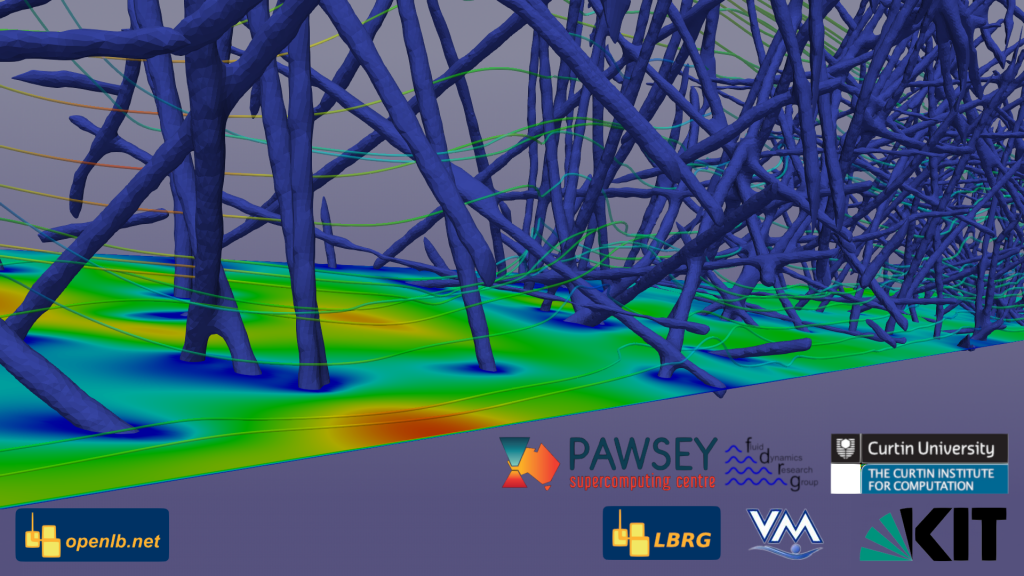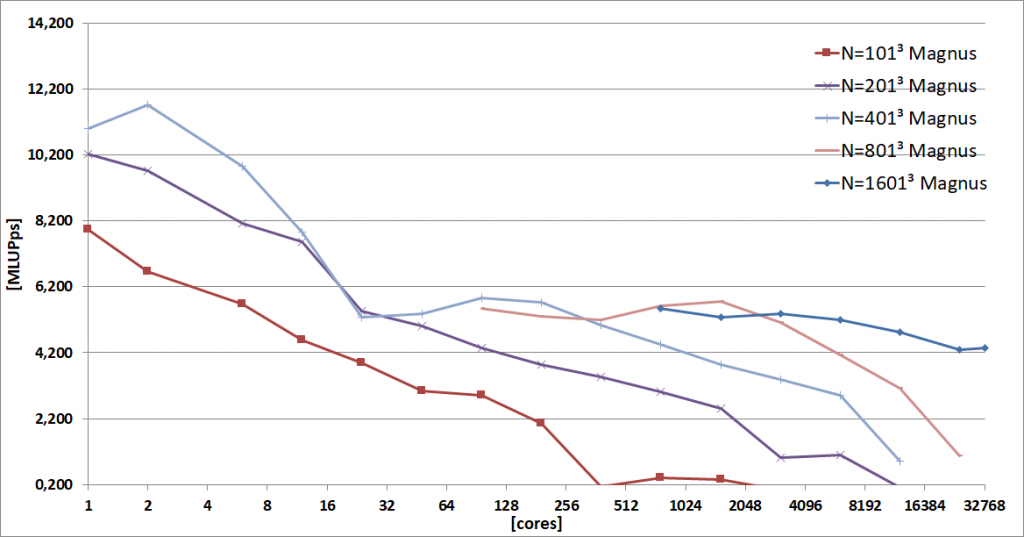by Mathias J Krause, Andrew JC King, Nima Nadim, Maciej Cytowski, Shiv Meka, Ryan Mead-Hunter, Hermann Nirschl, Benjamin J Mullins
In a joint project of the Lattice Boltzmann Research Group (LBRG) at the Karlsruhe Institute of Technology (KIT) and the Fluid Dynamics Research Group (FDRG) of the Curtin Institute for Computation (CIC, Curtin University), OpenLB was tested, profiled and improved on the Pawsey Magnus super computer (TOP500 at 358 Nov. 2018) and then applied to large scale fliter simulations. This represents one of the largest scale CFD simulations in the world.

The performance of OpenLB was evaluated for a realistic scenarios at the Magnus super computer (TOP500 at 358 Nov. 2018) using up to 32,784 of the available 35,712 cores obtaining 142,479 MLUPs. That are about 142 billion fluid cells which were updated in one second using OpenLB on Magnus. This proves the computational efficiency and scalability of OpenLB, which will allow it to solve some of the largest and most important fluid flow problems relevant to process engineering and a range of other fields.

